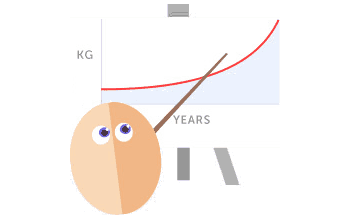I have had a quick look at the scientific literature and, yes, for women the ideal BMI shifts upwards with age.
This study:
http://www.ncbi.nlm.nih.gov/pmc/articles/PMC3273446/ shows that:
The BMI associated with minimum mortality for women increased with age. At age 50, the optimal BMI was 22.34 (95% CI, 20.10 to 24.57). The optimal BMI ranged from 19.25 (95% CI, 13.31 to 25.18) at age 18 to 26.86 (95% CI, 25.70 to 28.02) at age 85.
Whereas for men
the BMI associated with minimum mortality was 26.97 (95% Confidence Interval [CI], 26.41 to 27.54)
But of course, BMI still remains a crude tool for assessing visceral fat and its associated risks. The BMI cutoff value for obesity has been shown to be relatively insensitive for identifying excessive body fat: a large number of people with excess body fat actually have BMI values below 30.
The waist:hip or waist:height ratio is a better guide than BMI to your health. For example, this study:
http://www.ncbi.nlm.nih.gov/pubmed/23290534 looked at various body measurements and the risk of developing type 2 diabetes in women and found
increased risk for type 2 diabetes was associated with body mass index (BMI) ≥30 kg/m(2) (odds ratio 4.68, 95% CI 2.09-10.49), waist circumference (WC) >88 cm (odds ratio 6.99, 95% CI 1.60-30.42) and waist-height ratio (WHtR) ≥0.5 (odds ratio 3.15, 95% CI 1.91-15.81).
So, if you are a woman of a certain age (over 50) although your BMI target may be a little higher than for a young woman of 18, you need to consider your waist size as being the most important measure and aim for a waist smaller than 88 cm or less than half your height.





